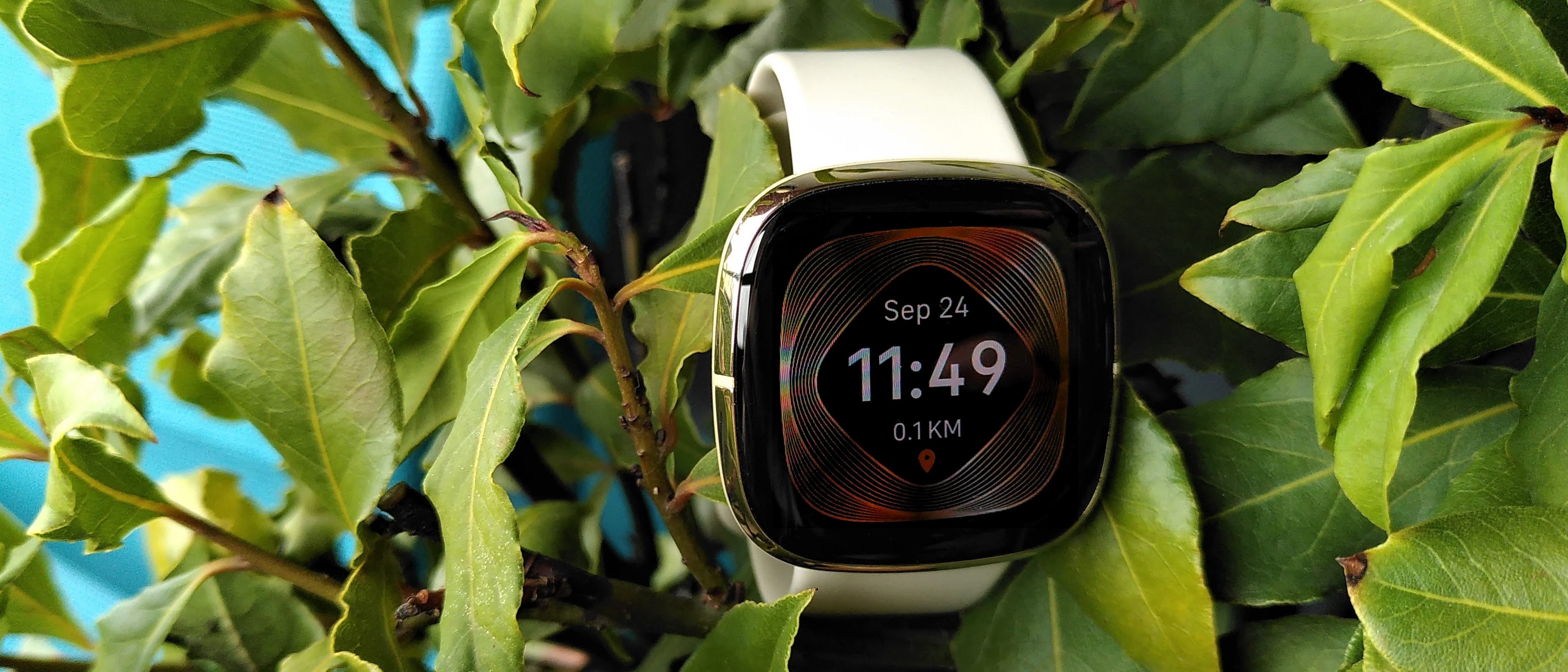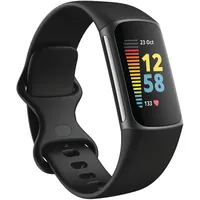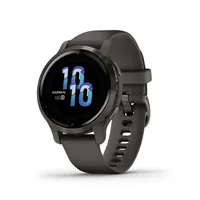TechRadar Verdict
The Fitbit Sense is an ambitious smartwatch that seems like a perfect fit for stressful times, with as much emphasis on mental wellbeing as tracking physical workouts. There's room for improvement on the software side and its next iteration didn't quite step in, but if you're interested in practicing mindfulness and making small steps towards a healthier lifestyle, the Sense could be just the tool to help you along the way.
Pros
- +
Detailed mood and stress logging
- +
On-board GPS for workouts
- +
Extremely comfortable to wear
Cons
- -
Many tools require Fitbit Premium
- -
Step counts not 100% accurate
Why you can trust TechRadar
Editor's Note
- First reviewed: July 2022
- Original price: $329.99 / £299 / AU$449.95
- Current official price: $159.99 / £219.99 / AU$224.95
Updated: January 2024: There are two reasons why we think the Fitbit Sense is worth buying over its successor, the Fitbit Sense 2. For one thing, since its launch, the Fitbit Sense has drastically dropped in price. And for another, the Fitbit Sense 2 has arrived on the heels of Fitbit's gutting of several community and music-related features in its watches going forward. At this very attractive price (and you can get it even cheaper during deals events at third-party stores like Best Buy in the US and Currys in the UK) the Sense remains worthy of inclusion in our best Fitbit list, and a relevant cheap watch for Fitbit enthusiasts.
The rest of this review remains as previously published.
Two-minute review
The Fitbit Sense is one of the best Fitbits, and builds on the success of the Fitbit Versa line with several thoughtful upgrades. It's designed to put you in charge of your wellbeing, helping you understand your body and mind, and make changes to improve your physical and mental health. It succeeds, for the most part – even better than its sequel, the Fitbit Sense 2.
Case size: 40mm x 40mm x 12mm
Weight with strap: 49.5g
Display type: color OLED
GPS: yes
Sports modes: 20
Operating system: Fitbit OS
Like many of the best smartwatches and best fitness trackers, it includes an ECG sensor to detect signs of atrial fibrillation, but its stress monitoring function is what really stands out, and is something everyone can benefit from and use every day – not just in a health crisis. It's a shame that many of the tools for managing your stress levels (such as meditation sessions and mindfulness tutorials) are only available to Fitbit Premium subscribers, but the Sense comes with a six-month free trial, so you can get a lot of benefit from them even if you choose not to extend the subscription afterwards.
The fitness tracking features offered by the Sense are also impressive, particularly if you're interested in training using heart rate zones. There's a wide range of activity tracking options, and together the watch and Fitbit app provide you with a set of workout appropriate stats once you've finished.
The ECG feature wasn't available at launch, but was activated in October 2020 via a firmware update. In June 2021, Fitbit began rolling out a new firmware update for the Fitbit Sense and Versa 3 that added audible Google Assistant notifications, new goal celebrations, and the ability to more easily change the watch face. Some users also received a new 'snore detection' tool as part of a public beta test.
The Sense isn't perfect though, and we can also see room for improvement within the Fitbit companion app - particularly the menstrual tracking tool, which would benefit from integration with the skin temperature sensor and stress-monitoring functions.
Sign up for breaking news, reviews, opinion, top tech deals, and more.
Price and availability
Fitbit Sense: Price and availability
At the time of writing, the Fitbit Sense is available directly from Fitbit and from third-party retailers, and currently costs $159.99 / £219.99 / AU$224.95. It's not available from Fitbit in the US due to the release of the Fitbit Sense 2, so the price above was pulled from Best Buy.
Contrast this with the Sense 2, which costs $299.95 / £269.99 / AU$449.95.

Fitbit Sense: Design and display
- Bright, clear display
- Comfortable Infinity Band strap
- Wide range of watch faces
The Fitbit Sense is a good-looking smartwatch. It has a very similar, almost identical
screen design to the Fitbit Versa line, with a square face and rounded edges that Fitbit's designers say are inspired by the lines of the human body.
The case is stainless steel, giving the sense a premium look, with a small touch-sensitive button on the left-hand side that can be set up for quick access to your most frequently used apps. A single-press will open one app (this is Alexa by default), and a double-press will display four shortcuts to other apps. We found this particularly useful for accessing our favorite workouts without scrolling through the watch's menus, and for quickly starting an EDA scan (more on that below).

The color display (covered with Gorilla Glass) is bright, sharp and responsive. Swiping to the right reveals various settings, including access to sleep mode, which dims the screen and deactivates vibrations, volume, screen brightness, always-on screen, and do-not-disturb mode. Swiping down from any screen will reveal a shade containing your notifications, which can be customized in the Fitbit app.
The Fitbit Sense comes with an Infinity Band strap, which is made from soft silicone with no hard buckles or catches. It’s very similar to the band on the recently released Polar Unite, and has the same issue of being ever so slightly tricky to fasten as you have to feed the end of the band underneath the strap to secure it. However, once you've mastered it, the band is extremely comfortable, and we found we barely felt it, which is particularly useful at night.
Fitbit recommends wearing it a little tighter while you’re working out to ensure an accurate heart rate reading, cleaning the band regularly with soapy water, and taking it off periodically to allow your skin to breathe.
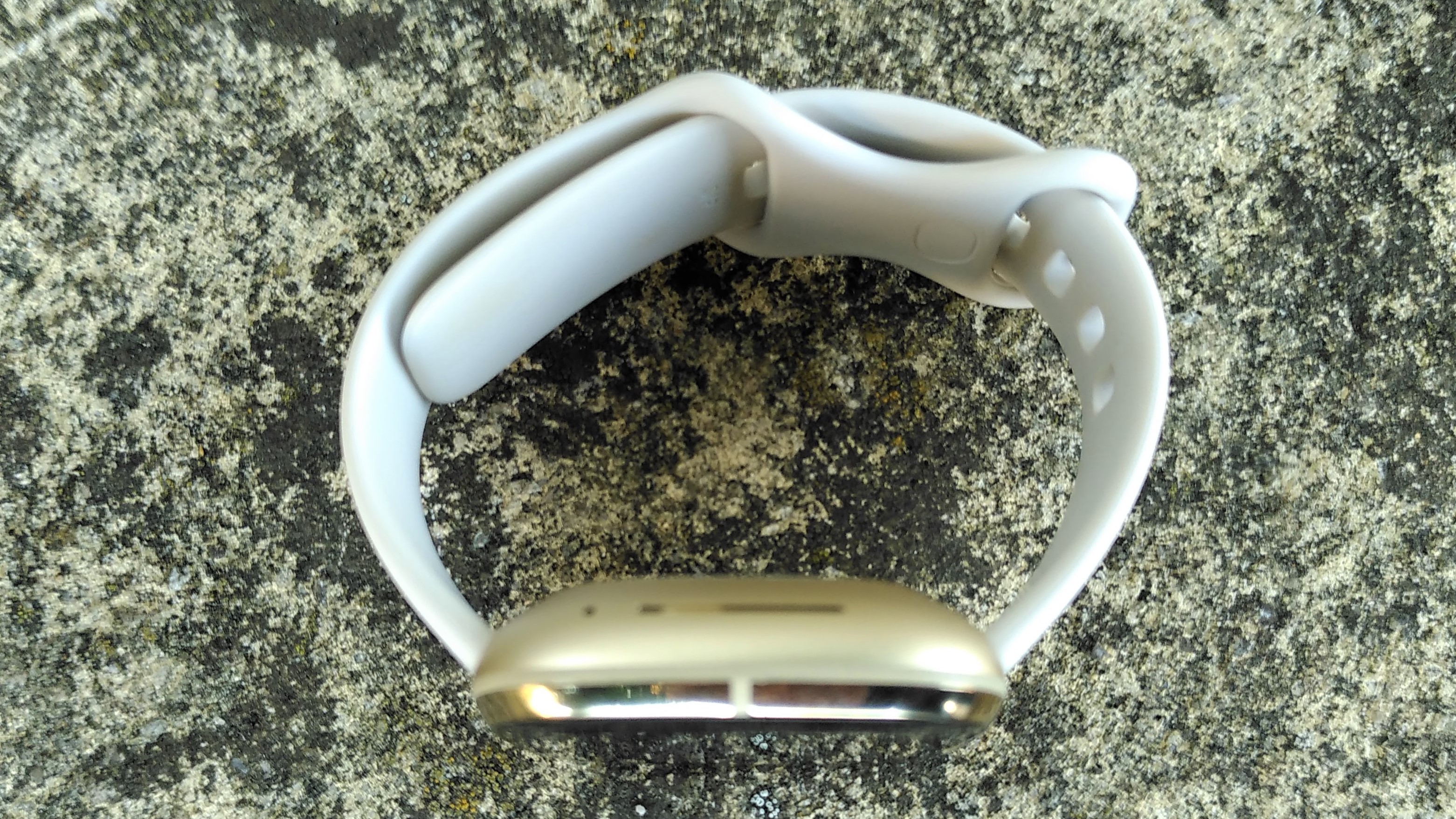
Like most Fitbits, the Sense is supplied with two bands to fit a range of wrist sizes. The smaller band fits wrists 5.5-7.1 inches in circumference, while the larger one fits wrists 7.1-8.7 inches in circumference.
There’s a huge array of watch faces to choose from in the Fitbit app (including the newly released SpO2 face), and you can pick four to save to your Sense for quick access. However, their location on the Sense is a little counterintuitive. Although the watch’s settings menu allows you to change various settings related to its face, including setting the brightness and toggling always-on mode on and off. However, if you want to change the design of the watch face, you need to access a separate menu labelled ‘Clocks’.
Fitbit Sense: Features
- Supplied with Alexa voice controls; Google Assistant coming soon
- Daily stress tracking and mood logging
- Wide range of mindfulness and meditation tools
The Fitbit Sense offers a maximum battery life of six days, but regular use of its various sensors will reduce that time significantly – as will use of the always-on screen. When it's time to top it up, charging is simple; the Sense comes with a small USB charger with a square dock that attaches to the watch’s pack using magnets. It’s very easy to use, and the magnetic connection means it’s impossible to misalign.
It offers all the usual smartwatch features you'd expect from a high-end Fitbit, including voice controls via Alexa (Google Assistant is coming towards the end of 2020) and Fitbit Pay (provided your bank is among those supported).
You will also receive call and SMS notifications from your phone, and can dictate responses to text messages using the Sense's built-in microphone. We'll be testing these features in depth over the coming days and updating this review based on our findings. Bluetooth call-answering is coming later in 2020.
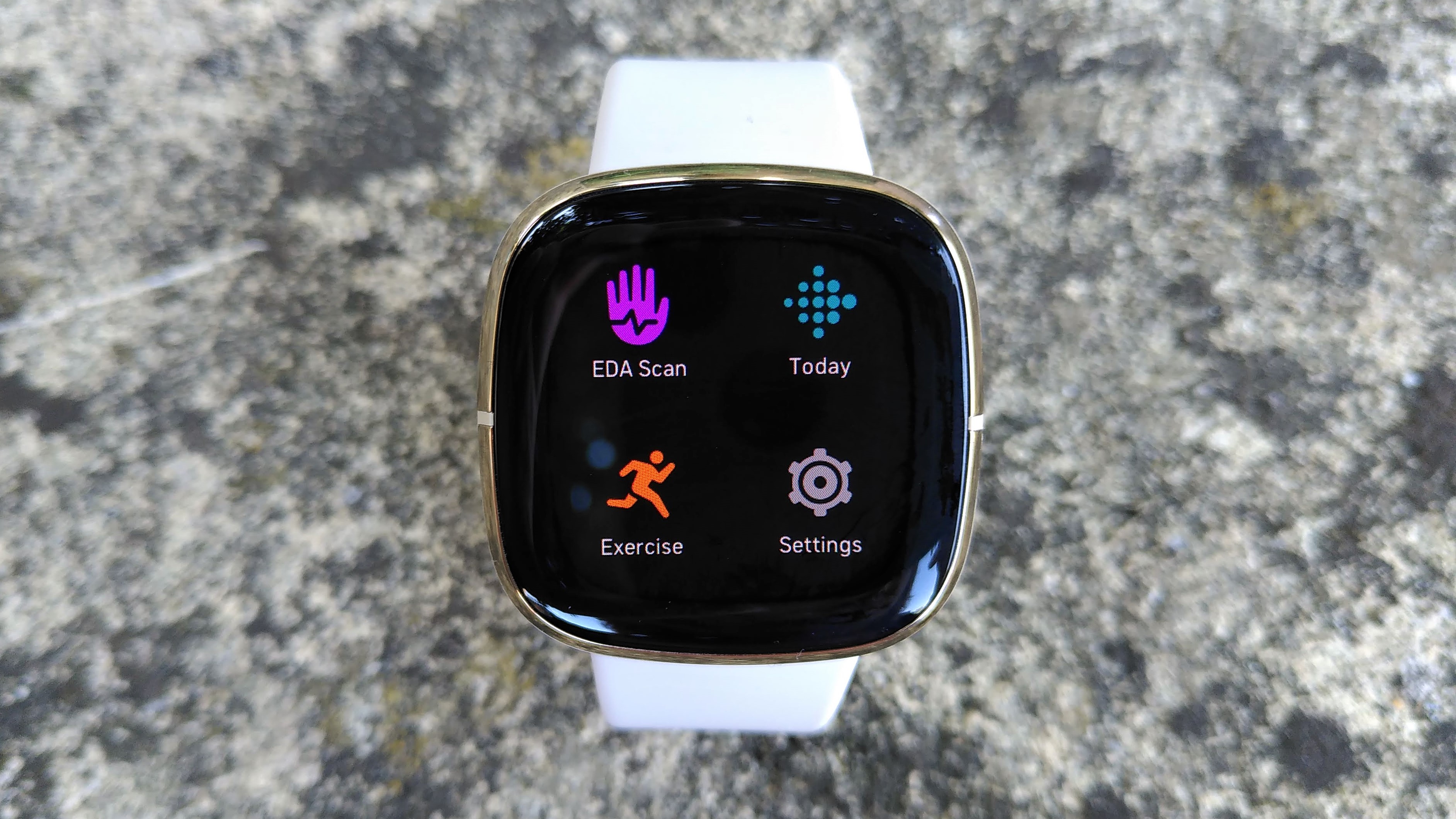
The Sense's standout feature is stress monitoring, which is measured in the form of electrodermal activity (EDA) responses, which are caused by the conductivity of your skin. This is affected by sweat, which is in turn affected by your adrenal glands. It’s worth noting that emotional stress isn’t the only factor that can affect EDA responses – physical stress like exercise and heat can affect it as well.
To run a scan, make sure you have the Sense secured well so that it can record your heart rate accurately, then swipe left, select ‘EDA scan’ and place your free hand over its face for two minutes. You’ll feel a gentle vibration when the scan begins and another when it’s completed. The fewer EDA responses the watch records, the calmer you (probably) are.
Once the scan is done, you’ll also be prompted to enter a quick record of how you’re feeling at that moment – very calm, calm, neutral, stressed or very stressed. You can then review these measurements in the Fitbit app.
Stress monitoring falls under the category of ‘Mindfulness’ within the Fitbit app. Here you can find a record of all past scans, plus a calendar showing your mood variations over time and a set of exercises to help you manage your stress. You can set ‘Mindfulness goals’, which will prompt you to perform an EDA scan, record your mood and practice mindfulness exercising over the course of several days. You can then look back at how your mood fluctuates over time and get an understanding of the factors that affect it.
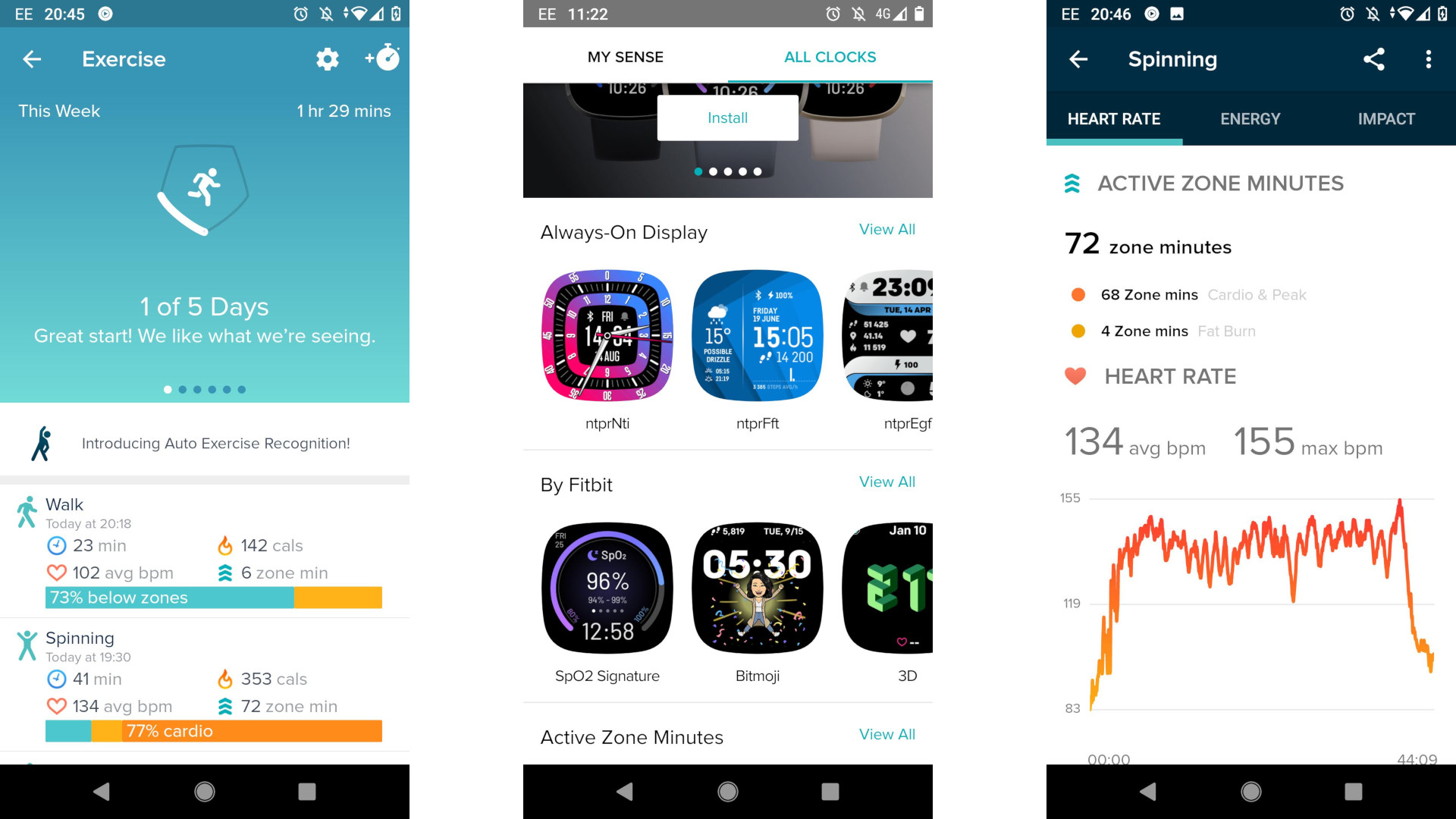
There are various tools for managing stress within the Fitbit app, but it’s worth noting that most of these require a subscription to Fitbit Premium. The Sense comes with six-month free trial of Premium, but you may well want to continue subscribing after this expires to get the most out of the device.
The Sense can also measure skin temperature at night, allowing you to monitor it for trends over time. It can’t explicitly tell you whether you’re suffering from an infection, but raised temperatures can be a sign that something is amiss.
After three nights, the Fitbit app will be able to establish a baseline temperature for your skin, and show you how it fluctuates as you sleep (some changes overnight being normal). The graph only shows variation, but this is sensible, as skin temperature on your wrist will be vastly different to core temperature, so the trends are more useful than the specific value and skin temp is better used to inform your overall sleep score than provide accurate core temperature readings.
If you choose to, you can take your core temperature with a thermometer and enter it manually.
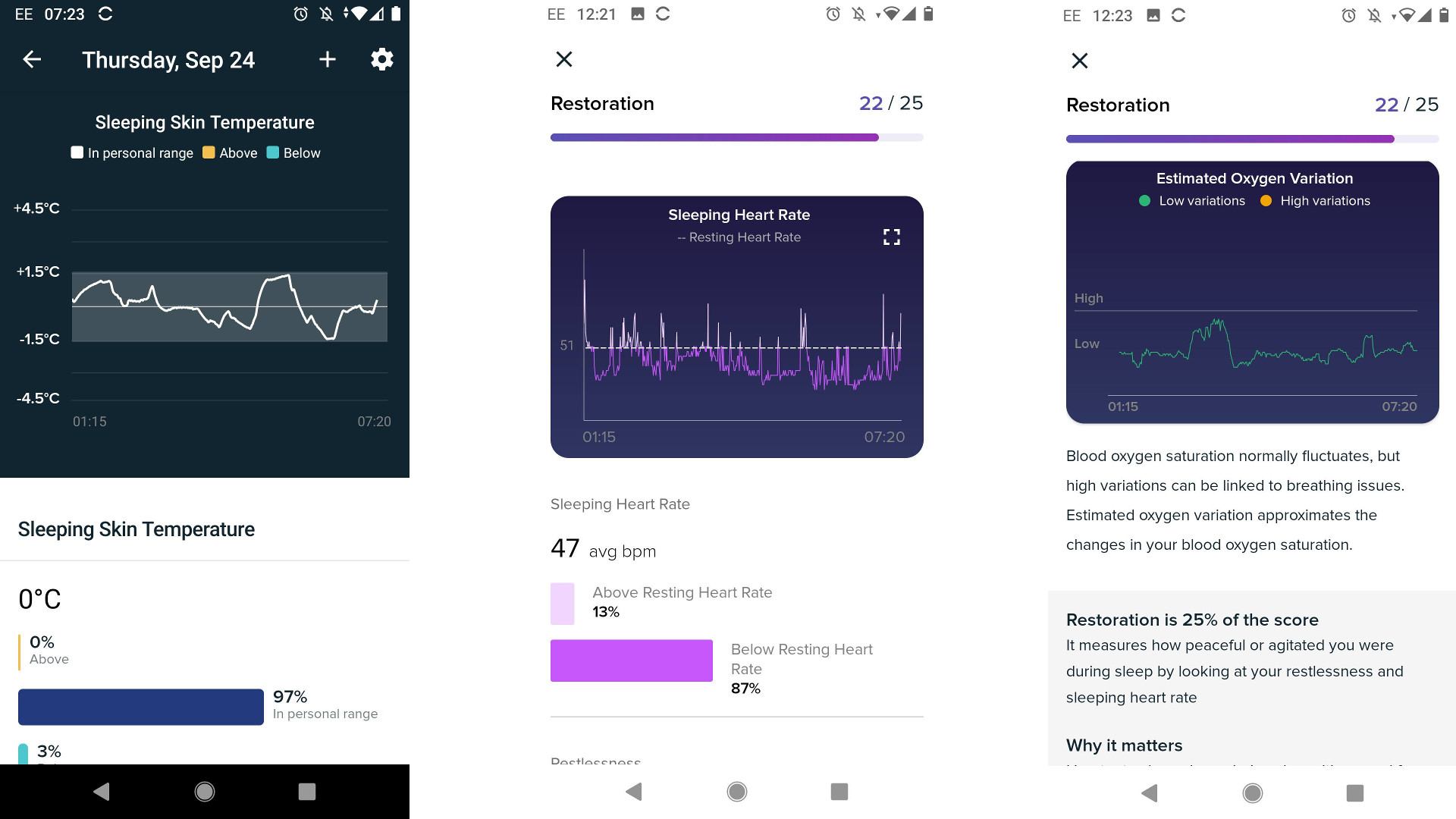
The Sense also tracks blood oxygen saturation (SpO2) as you sleep, which can help you spot signs of conditions such as sleep apnea, in which you stop breathing periodically during the night, resulting in disturbed sleep and fatigue in the morning. You will need to activate the sensor manually in your device's settings, and bear in in mind that doing so will cause the battery to drain a little faster.
Menstrual tracking is present in the Fitbit app, and although it's not recommended as a form of contraception, it shows when you're likely to be most fertile and allows you to log symptoms of PMT so you can be better prepared each month. This could be improved by integration with the mood tracking tools, so you can more easily see the impact of monthly hormonal fluctuations. We'd also like to see it incorporate data from the skin temperature sensor, which could be a useful indicator of ovulation.
Fitbit Sense: Performance
- Great choice of workout options
- Good for heart rate zone training
- On-board GPS and Strava support
Workout options for the Fitbit Sense include bike, bootcamp, circuit training, elliptical, golf, hike, interval workout, kickboxing, martial arts, pilates, run, spinning, swim, stair climber, tennis, treadmill, weights, workout and yoga – which should cover pretty much everyone.
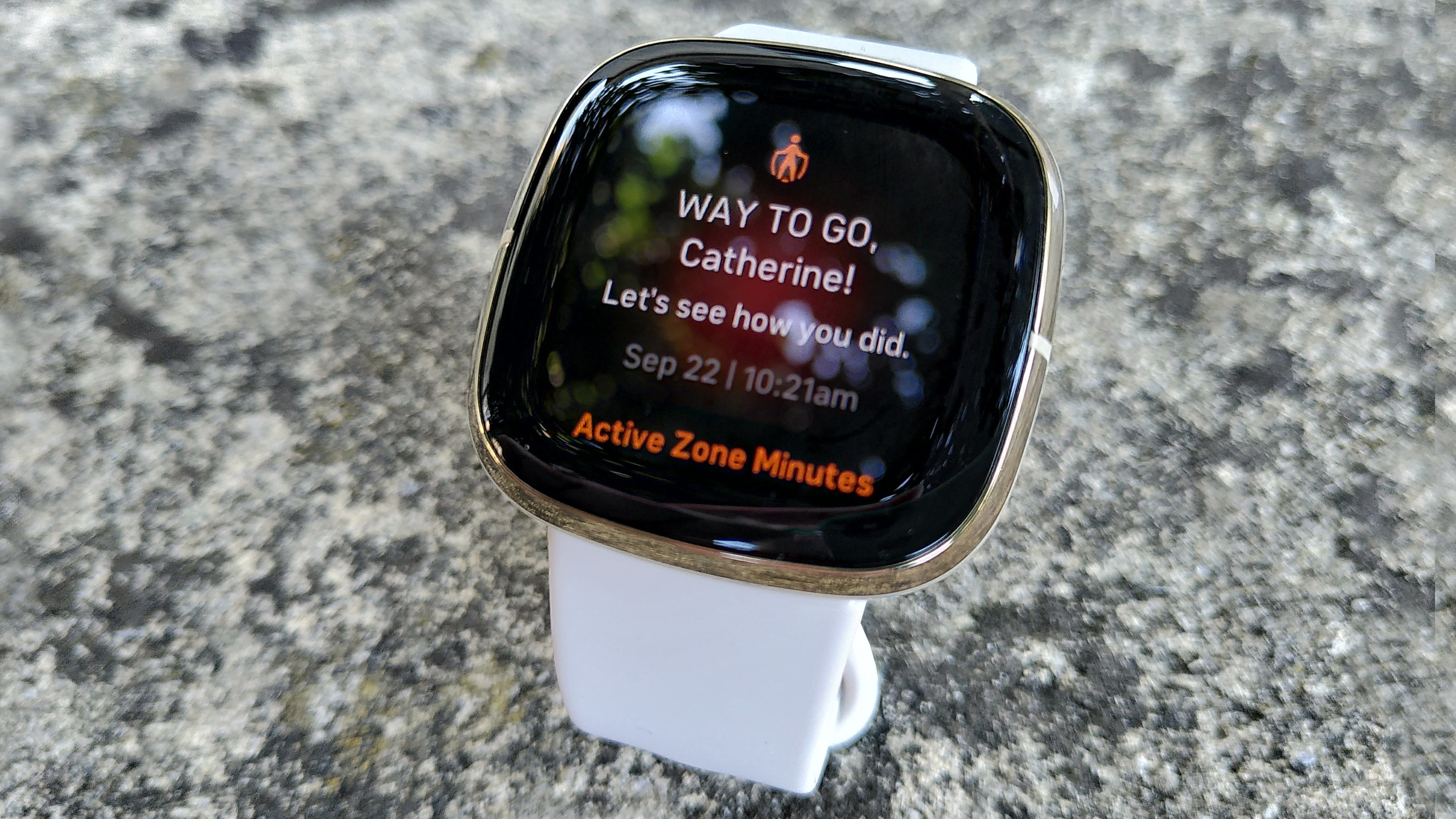
The Sense is water resistant to 50m, making it suitable for swimming in the pool or the sea (though Fitbit advises rinsing the strap with clean water afterwards).
We took the Sense for a pretty intense spin session and noticed no unexpected dips in heart rate that indicate an issue with fitness trackers. Our heart rate shown on the watch face mirrored our efforts on the bike, with only a slight delay as you'd expect from any wrist-mounted heart rate monitor.
The Sense vibrates to indicate when you're moving between heart rate zones, which is a very useful for training. We also liked the fact that the heart rate was displayed prominently on the screen at all times – something not all fitness trackers do.
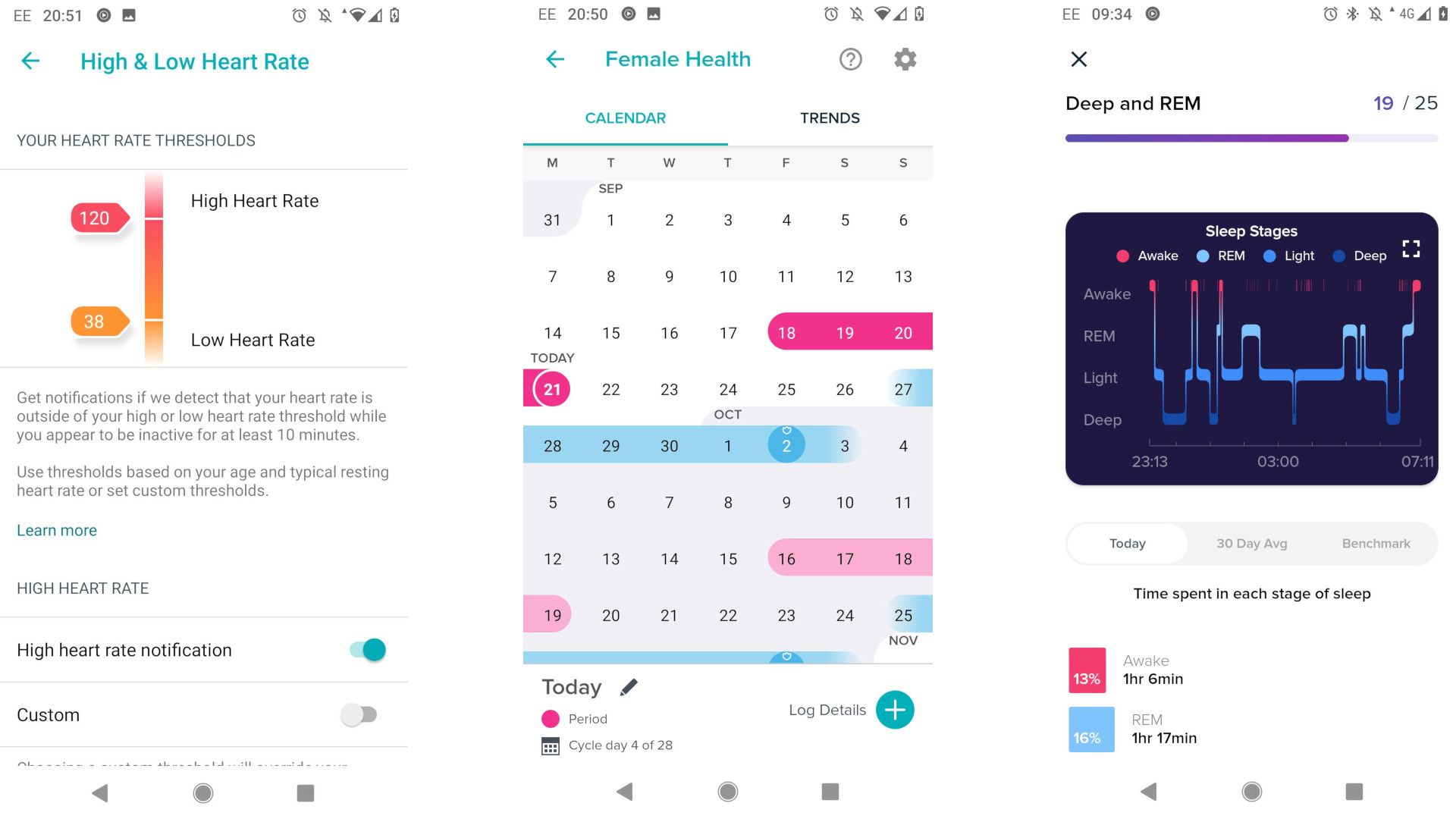
The only issue we encountered was that the Fitbit Sense logged quite a few steps while we were on the static bike, even though we were using the dedicated Spin exercise mode. It seems like it would be wise for cycling modes to temporarily turn off the watch's pedometer, though we're not sure how feasible that would be.
The Sense also features on-board GPS, so you can map out your runs, walks and bike rides without the need to carry a phone. The GPS will only be activated if you select the correct workout mode manually (it won't be activated if the device detects that you've begun exercising by itself), but this makes sense as it conserves battery life.
Once you've finished, your maps are visible in the Fitbit app straight away, and you can connect your Fitbit account to Strava so they are synced automatically.
Physical and mental wellbeing can have a huge effect on one another, and this is the first smartwatch we've seen that puts an equal focus on both. It still has some quirks to be ironed out, but these are mostly on the software side, so we anticipate the Sense will become even more useful over time.
Fitbit Sense: Buy it if
You want to keep tabs on mental wellbeing
The Fitbit Sense encourages you to take time out each day to reflect, and tracks your sympathetic nervous system responses so you can track the effects.
You're torn between a smartwatch and a fitness tracker
The Fitbit Sense gives you the best of both worlds, neatly bridging the gap between simple fitness trackers like the Fitbit Inspire 2, and fully-fledged smartwatches like the Apple Watch 7.
Fitbit Sense: Don't buy it if
You don't want another subscription
A Fitbit Premium subscription isn't mandatory, but you'll be missing out on a lot of great features without one, including deeper insights into historic health data, plus a full library of workouts, meditations, and mindfulness sessions.
You want third-party apps
The Fitbit Store is improving, but there's far less choice than you'll get if you opt for an Apple Watch.
Also consider
Fitbit Charge 5
The Fitbit Charge 5 includes the same EDA stress-tracking tech, ECG sensor, and GPS module as the Fitbit Sense, in a smaller package.
Read our full Fitbit Charge 5 review
Garmin Venu 2
If you're serious about the gym, the Venu 2 is well worth considering as an alternative to the Fitbit Sense. It's a superb sports-oriented smartwatch with excellent workout and everyday health tracking.
Read our full Garmin Venu 2 review
First reviewed October 2020.

Cat is TechRadar's Homes Editor specializing in kitchen appliances and smart home technology. She's been a tech journalist for 15 years, having worked on print magazines including PC Plus and PC Format, and is a Speciality Coffee Association (SCA) certified barista. Whether you want to invest in some smart lights or pick up a new espresso machine, she's the right person to help.
